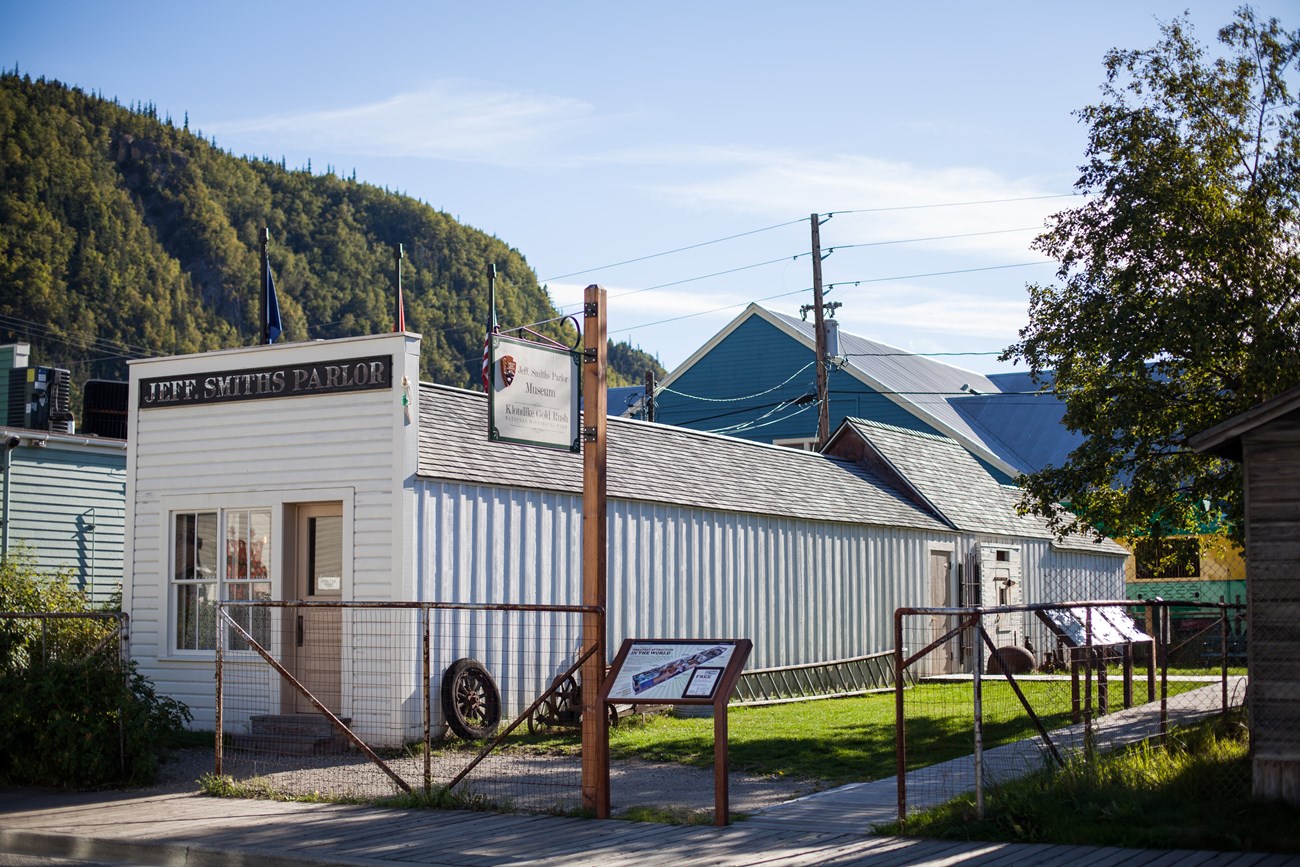
NPS/Renata Harrison One of Skagway's most prominent buildings, Jeff. Smiths Parlor Museum is forever connected to the notorious outlaw Jefferson Randolph "Soapy" Smith. Although Smith led his nefarious band of con men from its cramped rooms, he only occupied the building for three short months before his death in a gunfight. What happened to the building after Smith's demise is an unexpected story with a surprising array of owners, uses, and relocations. In 1935, Skagway promoter Martin Itjen converted Jeff. Smiths Parlor into a home-spun museum with gold-rush era artifacts, folk art, strange taxidermy, and even animatronic manikins. 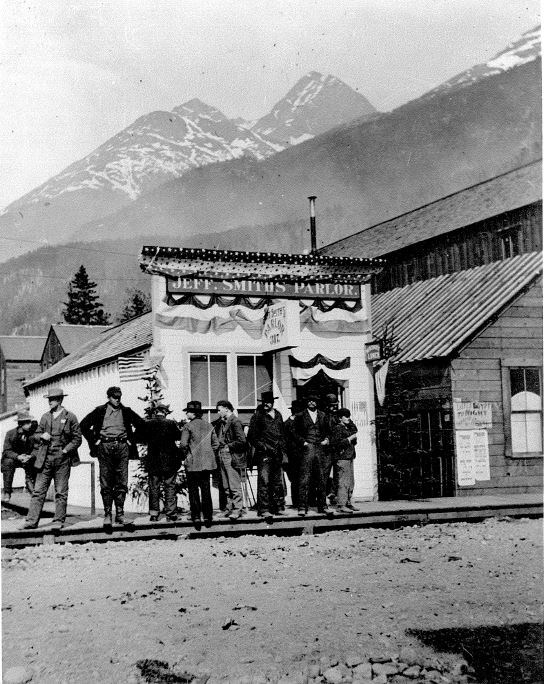
Charles Bunnell Photograph Collection, 58-1026-1109, Archives, University of Alaska Fairbanks From Bank to Parlor: 1897 - 1900 In July, 1897, boats began off loading thousands of crazed gold rush stampeders into the new town of Skagway. By September, businesses and wooden buildings began to appear. One of those early business, the First Bank of Skaguay [sic], constructed a small two-room building on 6th Avenue just off Broadway. By May, 1898, the bank moved out and Jefferson "Soapy" Smith set up his "business" inside the building. For less than three months, Smith and his band of robbers and con artists ran their schemes to fleece unsuspecting stampeders and intimidate the community. The use of the building as Jeff. Smith's Parlor ended abruptly on July 8, 1898 when Smith was shot to death in a gunfight and his band arrested. For the next two years others businesses tried their luck in the building including the Mirror Saloon, Clancy's, the Clancy Cafe, and the San Souci Restaurant. All of them failed. 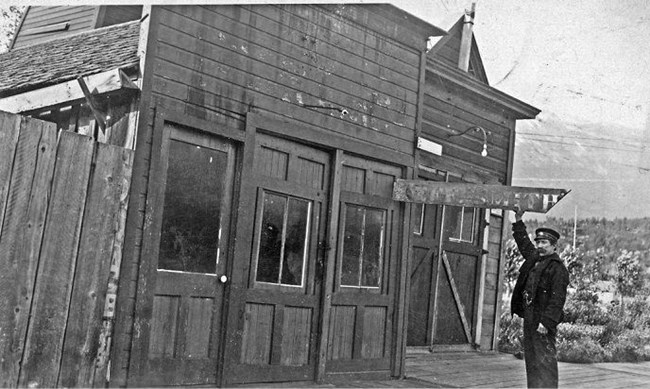
National Park Service, Klondike Gold Rush National Historical Park George & Edna Rapuzzi Collection, KLGO 55695. Gift of the Rasmuson Foundation. By 1900, Skagway's population was in decline and there were many vacant buildings as a result. With no businesses interested, the Skagway Volunteer Fire Department began using the building to store a hose cart and equipment. The building was transformed from a parlor into a garage with large doors. In 1916, the fire department moved the building across 6th street facing north. 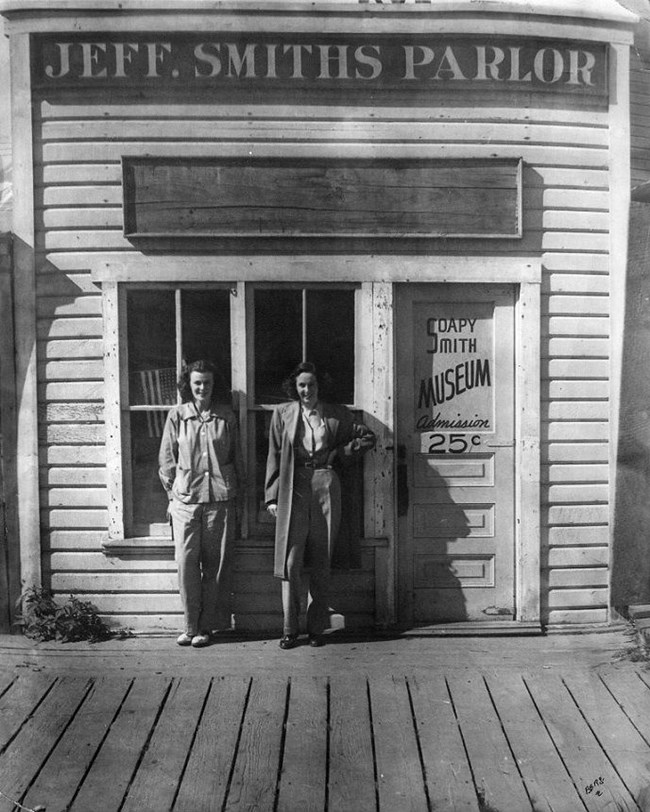
National Park Service Klondike Gold Rush National Historical Park, George & Edna Rapuzzi Collection, KLGO 55919. Gift of the Rasmuson Foundation. Jeff. Smiths Parlor Museum (Martin Itjen): 1935 - 1950 In 1935, former gold rush stampeder and Skagway tourism promoter, Martin Itjen purchased the building. Itjen rebuilt the building into "Jeff. Smiths Parlor Museum" to help tell the story of Skagway's gold rush era and the legend of Soapy Smith. The exterior was renovated to resemble how it looked in 1898, two additional buildings were added to the rear, the interior was refurbished, and gold rush artifacts were placed on display. Itjen added strange taxidermy specimens and a large diorama of two moose locked in combat but his most notable additions were three animatronic manikins named Soapy Smith, Dangerous Dan, and Lady Lou. Itjen died in 1942 and his friend Jack Greisbach operated the museum until 1950. 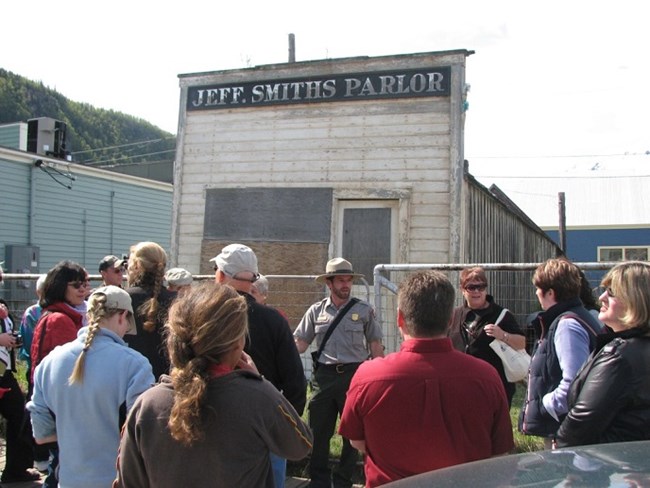
NPS photo Jeff. Smith Parlor Museum (George Rapuzzi): 1963 - 2008 In 1963, the building's new owner, George Rapuzzi, decided to move and reopen the museum. Rapuzzi chose a lot on 2nd Avenue near Broadway to be closer to the water front and the increasingly important cruise ship visitors. The relocated Jeff. Smiths Parlor reopened in 1967. Rapuzzi and his wife Edna operated the museum for the general public until her retirement in 1975. George continued to look after the building and give private tours until his death in 1986. Over the next twenty years the neglected building began to fall into disrepair, threatening the unique and rare artifacts stored inside. In 2007, the family sold the building and its contents to the Rasmuson Foundation. The following year the Rasmuson Foundation donated the building to the National Park Service. 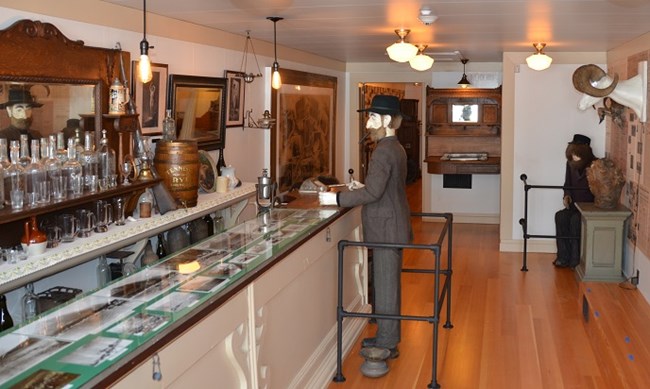
NPS photo/B.Hayes National Park Service: 2008 - forever After the building was donated, the National Park Service began a series of projects to restore the building and save the artifacts inside. First steps included emergency stabilization, an historic buildings report, and archeological surveys. The artifacts, which suffered water damage and pest infestation, were removed, restored, cleaned, and curated. The entire building was lifted, rotted floors removed, a concrete foundation built and new floors added. New cedar roofing, wall supports, climate control, and security systems were installed. After 8 years of work, the National Park Service opened Jeff. Smiths Parlor Museum to visitors in April 2016. Visitors can experience the building almost as it appeared in 1967 with many original artifacts on display. 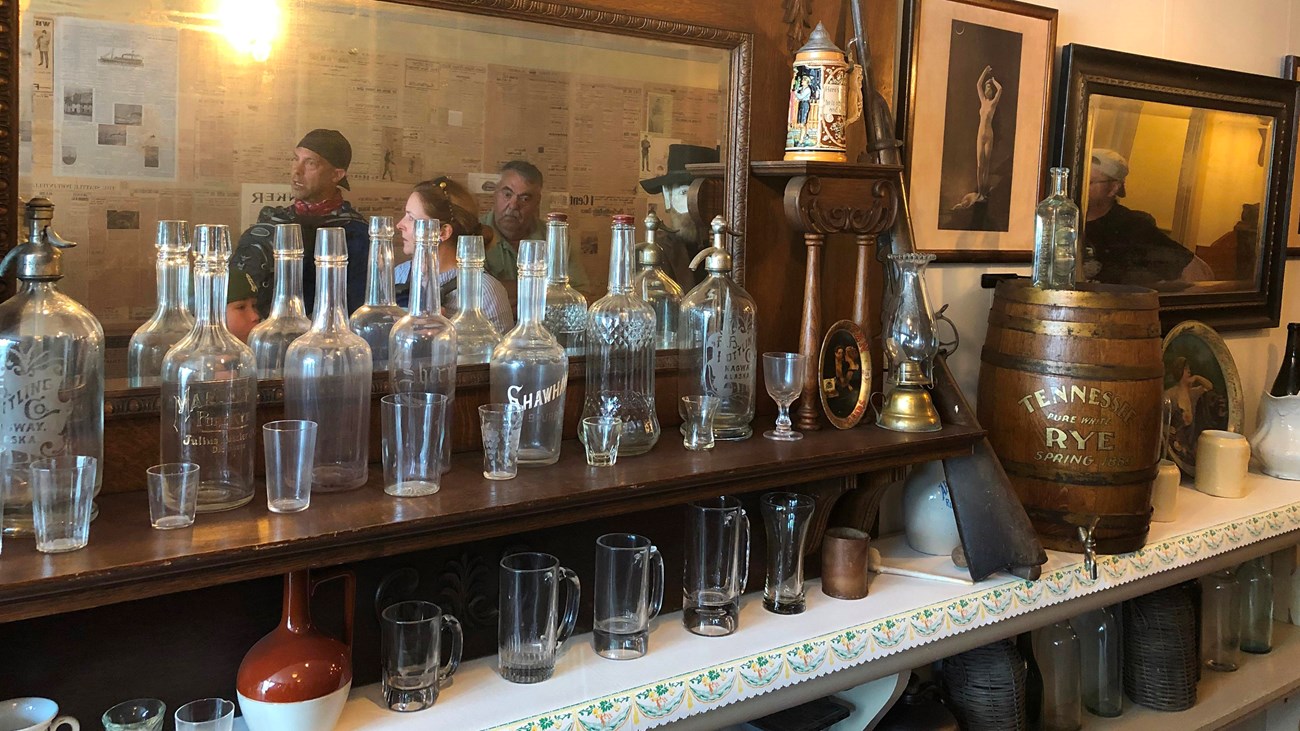
The George & Edna Rapuzzi Collection
Learn more about some of the unique and historic items in Jeff. Smiths Parlor Museum donated by the Rasmuson Foundation. |
Last updated: July 22, 2023
